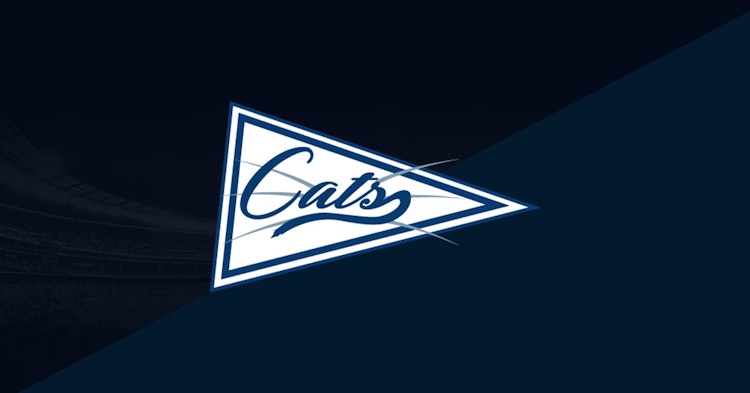Patrick Dangerfield Can’t Save The Stale Cats By Himself
Last updated: Jul 21, 2020, 7:18AM | Published: Jul 21, 2020, 1:28AM
At some point in Patrick Dangerfield's career, stoppages became extremely simple. In one stoppage on the wing against Collingwood on Thursday night, he took the ball so languidly it was like he was easing through shallow water, just casually riding the contact and finding a teammate.
By the numbers, Dangerfield is no longer the extraterrestrial that he was at his peak in 2016-2017. In 2017 he was particularly absurd, booting 45 goals while also averaging 30 touches and more than 7 clearances per game.
He hasn't transitioned yet, though, to not being Patrick Dangerfield.
 RELATED: Check out Stats Insider's Player Ratings and DNA visualisations
RELATED: Check out Stats Insider's Player Ratings and DNA visualisations
At 30, he's still a monster, and he still looks and plays like Dangerfield, just in slightly reduced volume.
He started the year slowly but has been immense the past two weeks, racking up a combined 18 clearances against Brisbane and Collingwood and outpacing every other player for metres gained in both games.
Against Brisbane, and in Geelong's dominant third quarter, one of those strange quarters where simply everything goes right for one team, Dangerfield was the star. A wheeling, boomed left-footed Dangerfield clearance on the edge of 50 set up the goal that started the avalanche. The clearance was vintage Dangerfield - a perfect read of the drop, accelerating to top pace immediately to create space, and having the power to whip a deep pass inside 50 with purchase.
Those are usually Dangerfield's best kicks - the booming, long clearances without too much sophistication beyond being long and straight and to a general area of danger. When he tries to get cute it often ends poorly. He is, though, still full of class, mostly by hand in close, or by weaving through congestion, and he can deliver a wonderful weighted ball on occasion.
RELATED: Give It A Break: Do Shorter Turnarounds Really Disadvantage AFL Teams?
In the Brisbane game, Dangerfield was the best among many standouts, but against Collingwood he was one star against the tide.
The Cats effectively repeated their qualifying final performance against Collingwood, with their play characterised by meek, unimaginative ball movement, in a game they always lingered in but never properly threatened. Geelong's conservative and anxious build-ups were hopeless compared to Collingwood's mania around the ball. Collingwood came in waves and Geelong came in sideways chipped kicks.
 Since their 11-1 start to last season, the Cats are 10-10, and at their worst they look like
they did against the Pies, lacking a certain vitality, tormented by risk aversion. There's not enough derangement at Geelong, not enough irresponsibility.
Since their 11-1 start to last season, the Cats are 10-10, and at their worst they look like
they did against the Pies, lacking a certain vitality, tormented by risk aversion. There's not enough derangement at Geelong, not enough irresponsibility.
The Cats are suffering from key injuries, but their main issue is not personnel, it’s the way they move the ball.
In that third term against Brisbane, the Cats stopped playing it safe. They frequently made the first best decision, instead of waiting for the perfect avenue that never comes. A lot of their kicks against the Lions were inboard and risky, but their players are skilled enough to make those passes most of the time, and if the ball finds itself at ground level, they're are among the best in the game at winning contests. Having a sense of adventure toppled the Lions but disappeared against Collingwood.
RELATED: What's the likelihood of a Cats flag? Check out our updated Futures Projections.
Dangerfield was the only antidote to staleness.
He was stronger and cleaner than everyone else at stoppages and hunted the ball and opponents with his unmistakable burrowing gait. One second quarter passage was particularly memorable, where Dangerfield was taken down on the near wing, then re-surfaced from nowhere seconds later like a primal, animated zombie, lunging desperately at Jack Crisp, as though he were trying to eat his brain.
In the end, he didn't have any help. His teammates were lethargic, most of all Gryan Miers, who played one of the worst, most disconnected games you will see, barely present in his body. At one point, after Chris Maynewas awarded a free kick, Miers lightly put his arms around Mayne a strange amount of time after the whistle had blown, as though he were so discombobulated that he simply needed a hug.
Jordan De Goey emphatically ended proceedings in the final minutes, kicking three exceptional goals late, and further making the case for why, when he returns from injury, he should never be allowed to leave the forward 50.
De Goey's spark - his hacked soccer goal off the ground from nowhere, his contested marking in between bodies, his burst of pace running along the boundary in the pocket - spoke to everything that Geelong was missing. The Cats are rarely short of toughness or class - but they lacked De Goey's madness and life.
Dangerfield has never lacked for vitality, but unless teammates and coaches join him, this season will end as all of Dangerfield's other Geelong seasons have, before the final weekend.
Did you enjoy this article? Join our free mailing list to get the best content delivered straight to your inbox, or join the conversation by leaving a comment below or on the Stats Insider Twitter or Facebook page.



